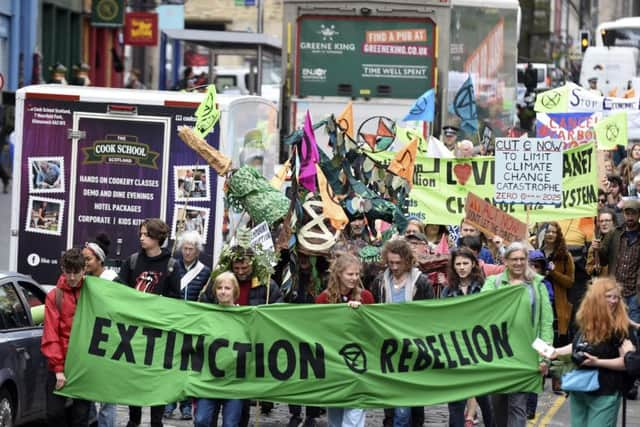Edinburgh will have Paris climate by 2050 as UK weather moves south
and live on Freeview channel 276
Over the same period, Leeds and Cardiff will be having Melbourne’s weather, while Manchester’s temperatures will resemble Lyon in southern France.
Further afield, the researchers found more than three-quarters of the world’s major cities will see “striking” changes in temperature and rainfall patterns by 2050 – and they say that is a conservative estimate based on relatively low levels of global warming.
Advertisement
Hide AdAdvertisement
Hide AdMore concerning still, nearly a quarter of the planet’s urban areas, including Singapore and Jakarta, will have climate conditions more extreme than anything seen in a major city anywhere in the world before, they found.


Professor Tom Crowther, of the ETH Zurich university in Switzerland, said: “It’s amazing that even with the most conservative estimate, you will see cities all over the globe seeing such huge changes.
“Having a climate like Barcelona’s might sound nice, but it will require vast changes in infrastructure to handle it. There will be droughts, water shortages, difficulties in agriculture – it will have an impact across the board.”
The study was released as climate crisis activists announced plans to stage a major protest in Glasgow next week as part of national protests held under the tagline ‘Summer Uprising’.
Advertisement
Hide AdAdvertisement
Hide AdThe protests are being organised by Extinction Rebellion, which is urging the UK and Scottish governments to halt biodiversity loss and cut green house gas emissions.
Campaigners are demanding politicians reduce emissions to ‘net zero’ by 2025.
They have also called for the creation of a citizen’s assembly on climate and ecological justice. The demonstrations to be held on 15 July will also take place in Bristol, Cardiff, Leeds and London.
The Scottish protest will focus on justice for climate change refugees.
Advertisement
Hide AdAdvertisement
Hide AdExtinction Rebellion organisers confirmed around 1,000 people have committed to being arrested during the uprising, with as many as 500 willing to risk prison over their actions ‘if necessary’.
A spokesman said hundreds of people are prepared to block cities throughout next week if local councils do not meet their demands.
He said the group was now planning a worldwide demonstration on Monday 7 October.
Last month protesters glued themselves to the Scottish Parliament building at Holyrood, demanding a change of policy from the Scottish Government. Elsewhere in Edinburgh demonstrators disrupted commuters and public transport on Lothian Road by lying in the street with their arms chained.
Advertisement
Hide AdAdvertisement
Hide AdDaniel Armstrong from Extinction Rebellion’s Scottish group said: “As the climate continues to break down, more and more parts of the world will become uninhabitable. Immigration is already seen as a big issue, but it will only increase as more people are displaced.”
Prof Crowther meanwhile hopes the research will help bring the reality of climate change home to politicians and the public – and that it will prompt city planners to study the city theirs will come to resemble in the future to prepare for the changes.
The average annual temperature in London will rise from 11.1C in 2000 to 13.2C in 2050, with the warmest month increasing from 21C to 26.9C, according to the study.
In Singapore, the average temperature for the year will increase from 26.9C in 200 to 30.8C in 2050, with the hottest month rising from 30.8 to 32.8C.
Advertisement
Hide AdAdvertisement
Hide AdProf Gabi Hegerl, at the University of Edinburgh, who was not involved in the research, said: “What I find most striking are the number of cities that move to unknown climatic conditions, most of them in the tropics.
“Some of these are large and fast-growing cities, and the new conditions could be harmful or dangerous as they are presently inexperienced in coming with extreme events.”